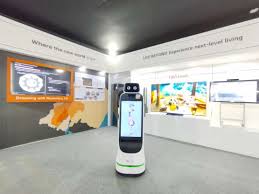teknologi nusantara

“Teknologi Nusantara” is a broad term encompassing the development and application of technology within the Indonesian archipelago. It can be interpreted in several ways, depending on the context:
1. Indigenous Technologies: This refers to traditional technologies developed and used by various communities across Indonesia for centuries. Examples include:
- Agricultural techniques: Traditional rice farming methods (like subak in Bali), fishing techniques, and various forms of sustainable agriculture.
- Building techniques: Traditional house construction methods using local materials like bamboo, wood, and thatch. The construction of intricate temples and other structures.
- Textile production: Traditional weaving techniques using natural dyes and materials, creating unique fabrics and patterns.
- Metallurgy: Traditional metalworking skills used in creating tools, weapons, and ornaments.
2. Modern Technologies Developed in Indonesia: This refers to technologies developed by Indonesian researchers, engineers, and companies. Examples could include:
- Biotechnology: Research and development in areas like agriculture, pharmaceuticals, and environmental science.
- Information and Communication Technology (ICT): Development of software, applications, and digital infrastructure. Indonesia has a growing tech startup scene.
- Renewable energy: Development and implementation of solar, geothermal, and other renewable energy sources.
- Aerospace: Efforts in satellite technology and aircraft manufacturing.
3. Technology Adoption and Adaptation in Indonesia: This refers to the use and modification of existing technologies from other parts of the world to suit the specific needs and conditions of Indonesia. This includes:
- Digital adoption: The increasing use of smartphones, the internet, and other digital technologies by the Indonesian population.
- Infrastructure development: The construction of roads, bridges, power plants, and communication networks.
- Medical technology: The adoption and adaptation of medical technologies to address health challenges in Indonesia.
Challenges and Opportunities:
The development of “Teknologi Nusantara” faces several challenges:
- Funding and Investment: Securing sufficient funding for research and development.
- Infrastructure: Improving infrastructure to support technological development and adoption.
- Skills Gap: Addressing the skills gap in science, technology, engineering, and mathematics (STEM).
- Digital Divide: Bridging the digital divide between urban and rural areas.
Despite these challenges, there are significant opportunities:
- Large and Growing Market: Indonesia’s large population presents a significant market for technological products and services.
- Rich Biodiversity: Indonesia’s biodiversity offers opportunities for research and development in areas like biotechnology and pharmaceuticals.
- Government Support: The Indonesian government is increasingly prioritizing the development of technology.
- Growing Startup Ecosystem: The emergence of a vibrant startup ecosystem is fostering innovation.
- baca juga:
In conclusion, “Teknologi Nusantara” represents a complex and dynamic field with a rich history and a promising future. Its development will be crucial for Indonesia’s economic growth and social progress.Kuliner Provinsi Madura
nama penulis:devina marva zora